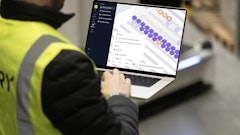
In the dynamic landscape of manufacturing, procurement plays a pivotal role in ensuring the seamless flow of materials and managing inventory. But the traditional approaches to inventory and materials management — long the domain of procurement — are facing a critical juncture. The complexity of modern supply chains, coupled with outdated planning and optimization methods, has created a significant gap between current capabilities and what is needed to thrive in the current landscape.
The conventional wisdom surrounding supply planning, which often relies on basic ABC/XYZ classifications, is no longer adequate. It's time for a fundamental reboot. The friction between these established, often manual, methods and the urgent need for advanced, effective strategies is palpable. Manufacturers are grappling with a paradox: the relentless pursuit of efficiency in inherently flawed processes.
From efficiency to effectiveness: The core challenge
The longstanding focus in manufacturing has been on efficiency – how quickly can we execute, how can we reduce time? While efficiency is undoubtedly important, it’s only beneficial if the underlying process is actually driving the desired outcomes. Many manufacturers operate with undeveloped and ad hoc processes, mistakenly equating speed with progress. They might be executing faster, but if the logic behind their ordering policies and inventory decisions is flawed, then the efficiency gains are moot.
This highlights a critical shift: the need to move from inventory management to inventory optimization. Management is about delivering and executing as efficiently as possible within existing frameworks. Optimization, however, is about fundamentally rethinking and improving the policies, processes, and approaches to achieve the most effective (impactful) outcomes. If you're being efficient at something with low or no impact, it doesn't matter. If you're being inefficient at something that drives the right outcome, that's a much better starting point.
This fundamental shift from mere efficiency to true effectiveness becomes starkly evident when considering the profound disruptions that have recently reshaped global supply chains.
The lingering shadow of disruptions: A call for optimization
The need for this shift isn't merely theoretical; it's a lesson hard-learned from recent global events. The echoes of the COVID-19 pandemic and the subsequent "tariff wars" between the United States and major trading partners, particularly China, continue to reverberate through global supply chains. News headlines are still rife with stories of companies struggling to recover from these shocks and adapt to fluctuating import duties and retaliatory measures, highlighting vulnerabilities that traditional inventory management systems simply couldn't withstand.
For example, the semiconductor shortage, which plagued industries from automotive to consumer electronics for years, was a stark reminder that a lean, just-in-time approach, while efficient in stable times, can crumble under unforeseen pressures. Similarly, many manufacturers faced significantly increased costs for essential raw materials and components due to tariffs, even if they weren't directly importing from the tariffed countries, as global pricing shifted. This isn't about simply having more inventory, but having the right inventory, at the right time, guided by intelligent systems that can anticipate and adapt to disruptions and rapidly changing trade policies. The imperative now is to build resilience, and that resilience is rooted in optimization, not just management.
The limitations of traditional methods
Traditional inventory management often involves:
● Basic classification: Relying on standard ABC/XYZ classifications to categorize inventory, which can be overly simplistic for complex supply chains.
● Static rules: Implementing rigid rules for reordering and stock levels that don't adapt to changing market conditions or demand fluctuations.
● Manual intervention: Excessive reliance on manual analysis and decision-making, which is prone to human error and biases.
These limitations lead to sub-optimal outcomes, including excess inventory, stockouts, increased carrying costs, and missed production targets.
Embracing advanced optimization for a modern world
So, what can be done? The path forward lies in adopting advanced approaches enabled by modern technology. This means:
● Advanced demand profile classification: Moving beyond simplistic categorizations to understand the nuanced demand patterns for each item, accounting or seasonality, trends, and unpredictable spikes.
● Optimizing order policies: Developing smarter, more business-logical order policies that consider a multitude of factors, including lead times, supplier reliability, storage costs, and strategic business objectives.
● Data-driven decision making: Leveraging data analytics and machine learning to identify trends, forecast demand with greater accuracy, and generate optimized recommendations.
The goal is to provide procurement teams with comprehensive scenarios and optimized recommendations, thereby removing the need for analysis and control of complex logic from those who may not have the necessary tools or time for such advanced analysis. It's about building on existing foundations, and in many cases, pushing for entirely different logic based on real-time data, trends, and actual performance.
Prioritizing for success
Ultimately, successful inventory optimization hinges on clear business priorities. A company cannot be the best at everything simultaneously. Is the primary goal lowest cost, highest on-time delivery, or perhaps maximum agility? By ranking these priorities— for example, cost as Priority 1, quality as Priority 2—businesses can set clear goals and work backward to develop optimization strategies that align directly with their most critical objectives.
The “Great Resignation” and the talent gap: Why automation isn't just efficient, it's essential
Another crucial factor accelerating the need for this procurement reboot is the ongoing challenge of talent acquisition and retention in manufacturing. The "Great Resignation" and the persistent skills gap have left many companies struggling to fill critical roles, including those in supply chain and procurement. Relying on manual, labor-intensive inventory management processes not only introduces human error but also places an undue burden on an already stretched workforce. By embracing advanced optimization techniques, manufacturers can automate routine tasks, leverage AI for complex analysis, and free up their human talent to focus on strategic decision-making and problem-solving. This isn't about replacing people, but empowering them with tools that multiply their effectiveness. In a climate where skilled labor is a premium, investing in optimization technology becomes not just a matter of efficiency, but a strategic necessity for business continuity and competitiveness.
The time for a procurement reboot in manufacturing is now. By shifting focus from mere efficiency to strategic effectiveness, and by embracing advanced optimization techniques, procurement can move beyond outdated practices and become a true driver of competitive advantage in the complex world of modern manufacturing. The future of manufacturing resilience and profitability hinges on this strategic evolution, transforming procurement from a cost center into a powerful engine for growth and adaptability.















